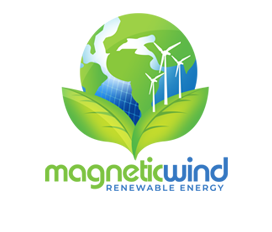FREQUENTLY ASKED QUESTIONS
FREQUENTLY ASKED QUESTIONS
At Magnetic Wind, we know that choosing the right wind turbine is an important decision, whether you’re powering a home, a business, or a community project. To help you better understand how our turbines work and what to expect, we’ve compiled answers to some of the most common questions we receive. From performance in extreme weather to maintenance, costs, and environmental impact, this FAQ is designed to give you clear, straightforward information so you can move forward with confidence.
Wind Turbine FAQs
How do your turbines perform in extreme temperatures?
Our turbines are engineered for durability in harsh climates. Whether it’s desert heat or freezing conditions, they’re designed with robust materials and cooling systems to maintain performance from –20 °C up to 55 °C and beyond, so your system stays reliable all year round.
Can these turbines handle sudden wind gusts or storms?
Yes. Built-in safety features—such as automatic braking and shutdown protocols—protect both the machinery and your property during extreme wind events, ensuring resilience and longevity.
What’s the expected lifespan and required maintenance?
With high-quality components and thoughtful engineering, our turbines typically offer a lifespan of 20+ years. Routine check-ups and occasional servicing ensure continued efficiency, with minimal downtime.
Are turbines noisy enough to disrupt homes or neighbors?
Modern turbine designs produce very low noise—around 45 dB at 300 meters, which is comparable to quiet surface levels. When sited properly, noise won’t affect comfort or your property’s tranquility.
How can wind turbines improve the look and feel of inner-city or community spaces?
Unlike traditional energy infrastructure, wind turbines are compact, quiet, and visually striking. Their sleek design allows them to serve as architectural features that complement parks, plazas, schools, and community centers. By integrating renewable energy directly into shared spaces, they not only generate clean power but also symbolize progress and pride, making sustainability visible and beautiful in everyday life.
How much does a small or medium wind turbine cost?
Costs vary based on capacity and customization, but small-scale systems pricing depends on local logistics and site-specific factors. Contact us for an assessment and pricing quotation.
What wind speeds are required for optimal energy generation?
Turbines are categorized by wind class and rated to operate efficiently starting as low as 7–10 m/s depending on the design and site. Placement in areas with consistent wind significantly boosts output.
How do turbines integrate with energy storage for dependable supply?
Pairing turbines with battery storage systems ensures that excess power generated during windy periods is saved—providing energy when the wind is calm. This hybrid setup guarantees power continuity round-the-clock.
Are your turbines environmentally friendly?
Absolutely. Wind energy ranks among the lowest in greenhouse gas emissions across its life cycle. Additionally, turbine land use is minimal—and usually compatible with agriculture and wildlife conservation.
What about visual and wildlife impact concerns?
We prioritize responsible siting and environmental assessments. While wind farms occupy broader areas, only a small fraction is disturbed, and wildlife impacts can be minimized through thoughtful turbine placement and mitigation strategies.
Wind Power Energy Storage FAQs
Why do I need a battery with my wind turbine?
Wind is variable. A battery stores surplus power when the wind is strong and makes it available during low-wind or peak-use hours, ensuring a steady energy supply.
What size battery do I need for my system?
It depends on your energy usage. Residential users may need smaller systems (10–20 kWh), while commercial or community setups often require larger, scalable solutions.
Can battery systems work off-grid?
Yes. Storage systems can support fully off-grid homes and communities, especially in remote areas where grid connections are limited or unreliable.
How long do wind energy batteries last?
Modern systems are designed for thousands of charge cycles, often lasting 10–15 years with proper maintenance.
Are battery storage systems safe?
Yes. Today’s storage technologies come with built-in protections against overcharging, overheating, and short circuits, making them safe for residential and commercial use.
Can I expand my storage system later?
Absolutely. Most solutions are modular, allowing you to add more units as your energy demand grows.
How does storage affect costs?
While storage adds upfront investment, it reduces reliance on diesel or grid power, often leading to long-term savings on energy costs.
